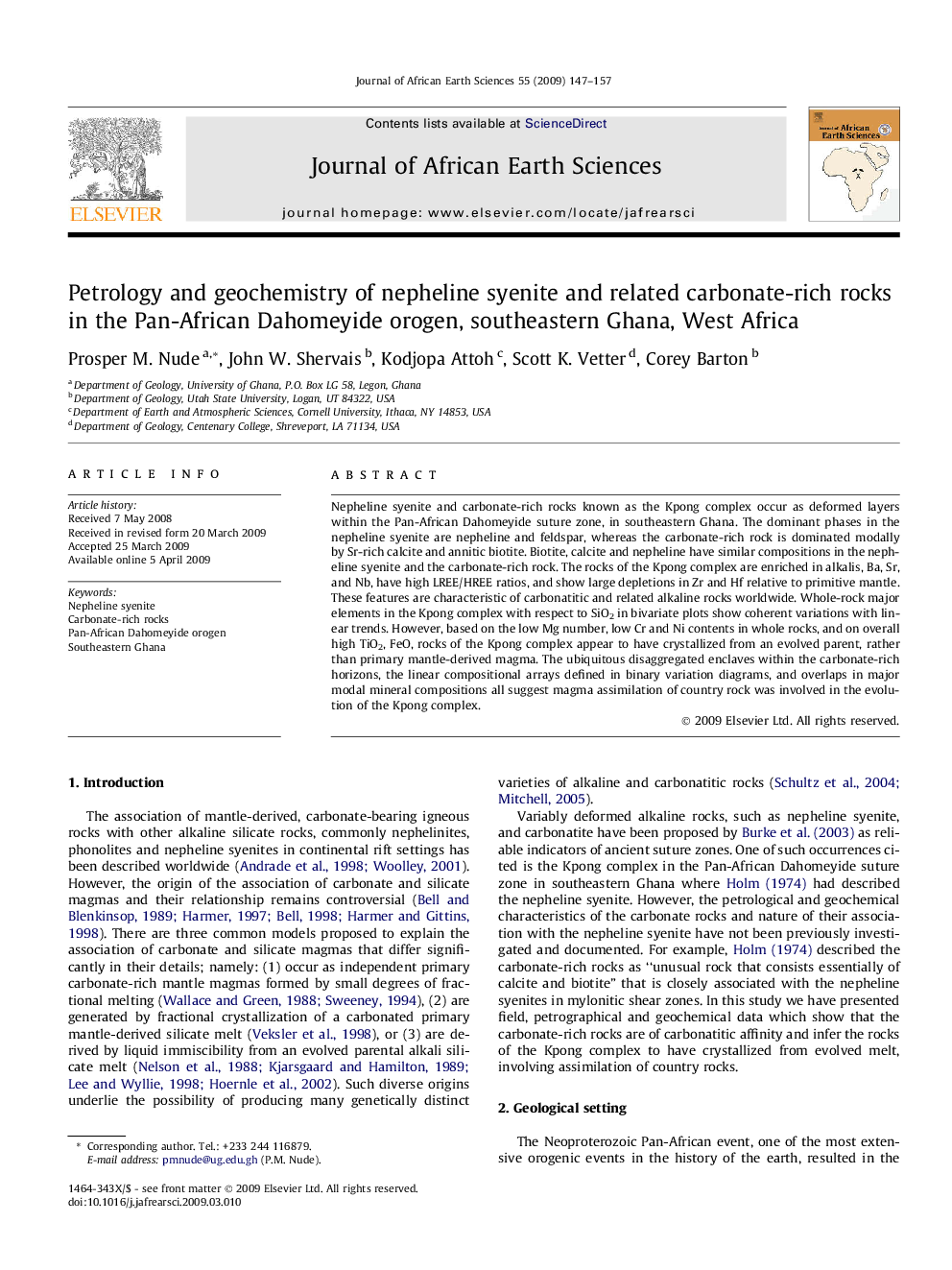| Article ID | Journal | Published Year | Pages | File Type |
|---|---|---|---|---|
| 4729572 | Journal of African Earth Sciences | 2009 | 11 Pages |
Nepheline syenite and carbonate-rich rocks known as the Kpong complex occur as deformed layers within the Pan-African Dahomeyide suture zone, in southeastern Ghana. The dominant phases in the nepheline syenite are nepheline and feldspar, whereas the carbonate-rich rock is dominated modally by Sr-rich calcite and annitic biotite. Biotite, calcite and nepheline have similar compositions in the nepheline syenite and the carbonate-rich rock. The rocks of the Kpong complex are enriched in alkalis, Ba, Sr, and Nb, have high LREE/HREE ratios, and show large depletions in Zr and Hf relative to primitive mantle. These features are characteristic of carbonatitic and related alkaline rocks worldwide. Whole-rock major elements in the Kpong complex with respect to SiO2 in bivariate plots show coherent variations with linear trends. However, based on the low Mg number, low Cr and Ni contents in whole rocks, and on overall high TiO2, FeO, rocks of the Kpong complex appear to have crystallized from an evolved parent, rather than primary mantle-derived magma. The ubiquitous disaggregated enclaves within the carbonate-rich horizons, the linear compositional arrays defined in binary variation diagrams, and overlaps in major modal mineral compositions all suggest magma assimilation of country rock was involved in the evolution of the Kpong complex.
